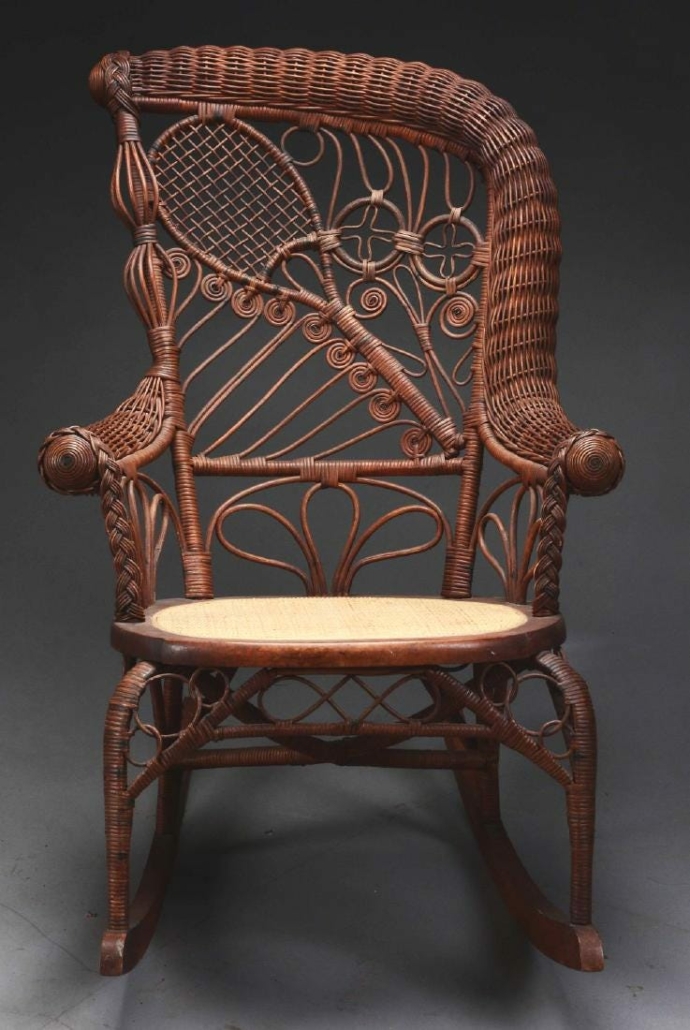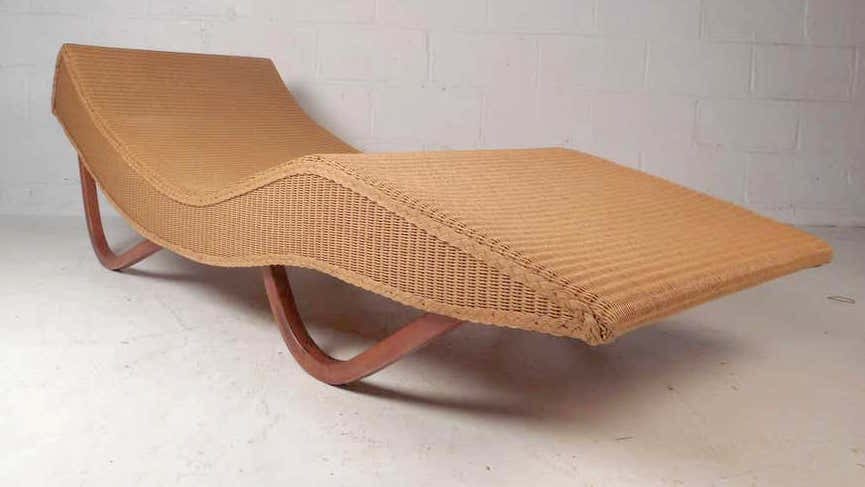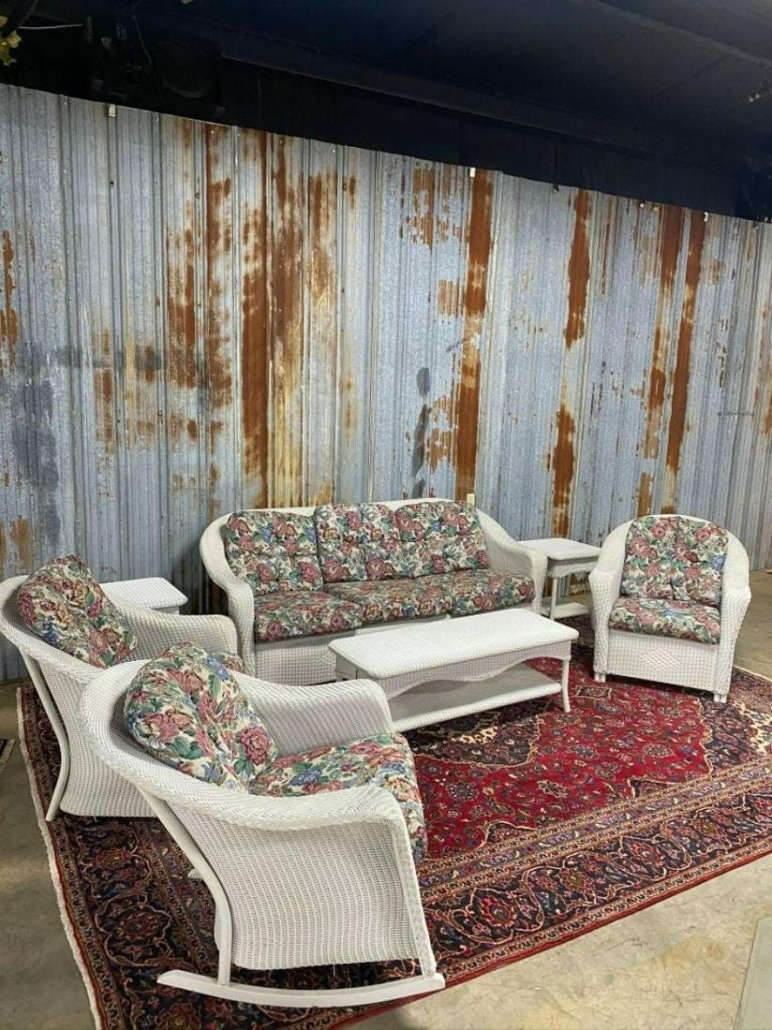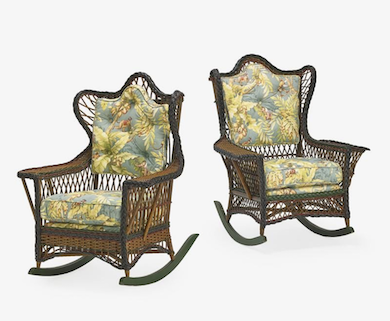
NEW YORK — When seeking stately yet informal furnishings for porches, sunrooms, and other outdoor spaces, it’s hard to beat wicker furniture. Though it is still being made in much the same way as it has been for centuries, many people seek out vintage examples. Such pieces add texture to a room as well as character.
The beauty of wicker furniture is in its strength; pieces are hardy and comfortable, yet look airy and lighter than their wooden counterparts. While many items are fashioned from rattan, a durable vine that is native to the jungles of south and southeast Asia, “wicker” is a broader term that refers to the technique of how the furniture is made from natural materials that can be steamed, bent, and framed. These materials include willow, rush, cane, raffia, certain grasses, and of course, rattan. Manufacturing furniture from rattan calls for harvesting the vine’s solid core, cutting it into smaller sections, and steaming or soaking it in water in order to bend it into different shapes. The outer peel of the rattan vine is then woven around furniture joints.

One of the most sought after names in vintage American wicker is Heywood-Wakefield, which began as two separate Massachusetts companies in the 1800s: the Wakefield Rattan Company and Heywood Brothers. The two once were fierce competitors but merged in 1897 and created wicker furniture until the 1970s. Known for its beautiful designs, the company produced several items that are still enjoyed today from its kidney-shaped ottomans to its beloved peacock chairs.

A Heywood-Wakefield wicker rocking chair secured the top price in LiveAuctioneers’ results database when it earned $6,400 plus the buyer’s premium in November 2009 at Neal Auction Company. The chair has an oval back with scroll supports, canted stiles with bulbous decoration, outswept arms, a serpentine carved seat over an X stretcher, and bracketed legs. Its fine craftsmanship, thoughtful details, and masterful shaping exemplifies what makes vintage wicker so desirable.
Passionate collectors of wicker-style furniture eagerly scoop up pieces by Lloyd Loom. In general, Lloyd Loom furnishings are either painted or sealed in a clear coating. The colors that most appeal to collectors are gold, pink and green.

The English company traces its roots to 1917 when inventor Marshall Burns-Lloyd, who had already patented 200 inventions, came up with a new form of weaving that connected twisted paper and paper covered wire. The result was even stronger and longer lasting than wicker. Burns-Lloyd gained fame for making baby carriages with this revolutionary weaving technique before creating comfortable, informal furnishings that became popular. Each piece was made by a single craftsperson who would upholster the Loom material over a bent wood frame in a process that was painstaking and time consuming.

Lloyd Loom pieces are coveted for their sculptural beauty and undeniable craftsmanship as well as their sturdiness and longevity. A prime example is a Lloyd Loom chaise lounge that fetched $900 plus the buyer’s premium in August 2020 at Horseman Antiques. “Excellent woven detail and patterns throughout this piece show true quality,” according to the auctioneer’s catalog description. The wave lounge chair is striking for its sculptural shape and unusual bentwood sled legs.
Both Heywood-Wakefield and Lloyd Loom furniture pieces were designed to go outdoors (though keeping them in enclosed spaces is recommended because wicker is not an all-weather material). They look just as good indoors, however, from the bedroom to the dining room to anywhere an informal touch is welcome. People are initially drawn to these pieces for their sculptural frames but their intricate woven designs and finish cement their appeal. Still, it’s best to keep to one statement piece to avoid imparting a 1970s feel to a given room. When it comes to bringing wicker furniture indoors, less is truly more.
# # #


